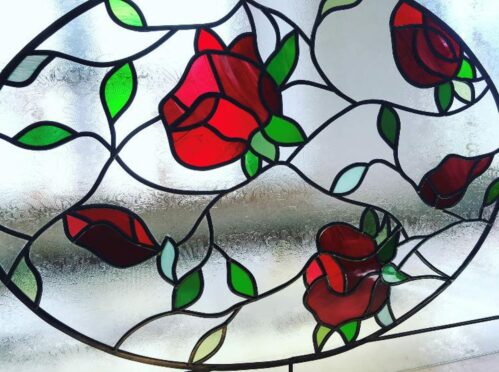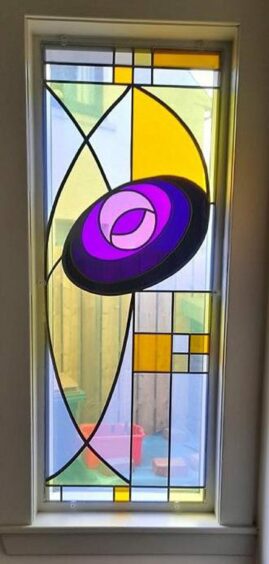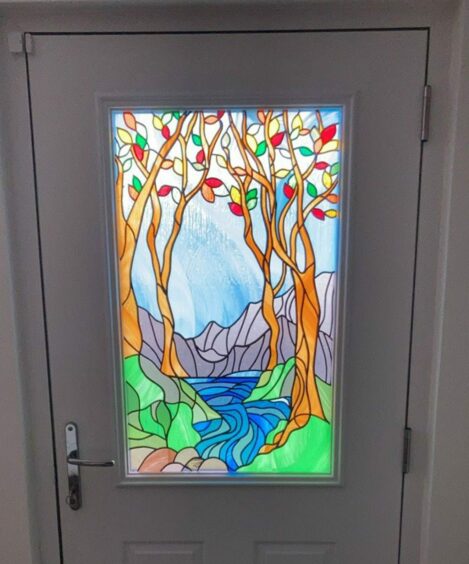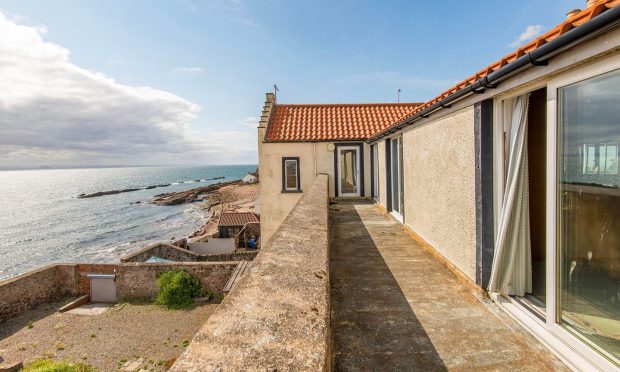Stained glass is an imaginative way to redecorate homes this spring. Esk Glazing’s resident artist shares how to make stained glass art that will make a statement in your space.
-
Some Courier online content is funded by outside parties. The revenue from this helps to sustain our independent news gathering. You will always know if you are reading paid-for material as it will be clearly labelled as “Partnership” on the site and on social media channels,
This can take two different forms.
“Presented by”
This means the content has been paid for and produced by the named advertiser.
“In partnership with”
This means the content has been paid for and approved by the named advertiser but written and edited by our own commercial content team.
Spring is a time for renewal, when the world wakes up from the dead of winter and plants start to grow again.
It’s no wonder many people want to bring that same revitalising spirit into their lives, cleaning up and refreshing their homes this time of the year.
Installing stained glass windows and/or doors is one great way to give any space a bright and airy look by bringing in plenty of natural light and colour.
Not to mention, it’s a creative way to personalise a room and put your unique stamp on it.
East Scotland’s premiere glazing company, Esk Glazing in Arbroath, has been creating stained glass for years. Their stained glass artist Emma McDermott says: “It’s something that only Esk Glazing do around this area. It is a bespoke service. There aren’t many companies that do the design from scratch and then make it in-house. So that is something that sets us apart from the other glazing companies.”
It takes Esk Glazing around six to eight weeks to complete a piece of stained glass for a window or door.
Emma walks us through how to make stained glass art for their clients, showing us how she breathes life to her one-of-a-kind designs.
How to make stained glass art
1. Collaborating with a client on a specific design
After a client gets in touch, Emma sets up meetings to discuss details, like what they want to see in the stained glass and how opaque they want the glass to be.
Emma says it’s better for clients to visit Esk Glazing’s Design Studio to see her previous work and what options are available. If a client is unable to meet in person, Emma can send little glass or colour samples to their house.
She then proposes several different designs so the client can have options to choose from.
At this stage, tweaks and changes can be made before the design is finalised and the client signs off.
For Emma, nailing the design is the most crucial part of the entire process to make sure they’ll use the right glass and the right colours for the client. She says: “I don’t ever want to get started until I know it’s absolutely right.”
2. Printing the design on paper
Emma places the orders for the glass and the lead. Then, she prints the design on paper to get the exact proportions.
3. Working with lead
Emma then puts the glass on top of the paper and starts working with the lead to create the pattern of the design.
At Esk Glazing, clients have the option to use gold, silver or platinum-coated lead, in case they want it to match their window or door handles.
4. Adding colour
Emma adds colour, choosing from hundreds of different shades and effects if she is given free rein. But sometimes, she says, clients can be very specific about the colours they want in order to match their walls or curtains. Emma confidently says Esk Glazing can deliver.
5. Oxidising lead
Emma adds more lead and blackens it with an oxidising solution to give it some shine and an aged effect before it’s cleaned. Emma says this stage really makes the colours stand out.
“I try and give updates as often as I can. I’ll send photos of how the work is getting on and let them know which part I’m at or when it’s finished.”
6. Double glazing
If the stained glass will be fitted into a home, as in a front door or a hopper window in a conservatory, it will undergo double glazing for protection. This usually takes a week or two.
How to take care of your stained glass
Stained glass hides dirt quite well. To clean it, Emma recommends rubbing it down with a damp cloth. An old toothbrush or paintbrush can also be used to get between the glass and the lead and make sure there’s no dirt caught there.
When calling in window cleaners, make sure they won’t be too rough with it and possibly damage the lead.
To polish stained glass and make it last for years, clean it with patination oil or the glass cleaner from Esk Glazing every six months to a year.
Visit Esk Glazing’s design studio on Facebook to start designing your own stained glass window or door now.












